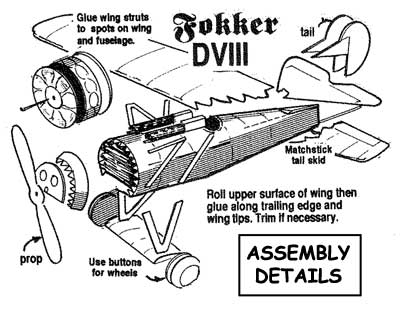

Fokker DVIII Flying Razor Blade
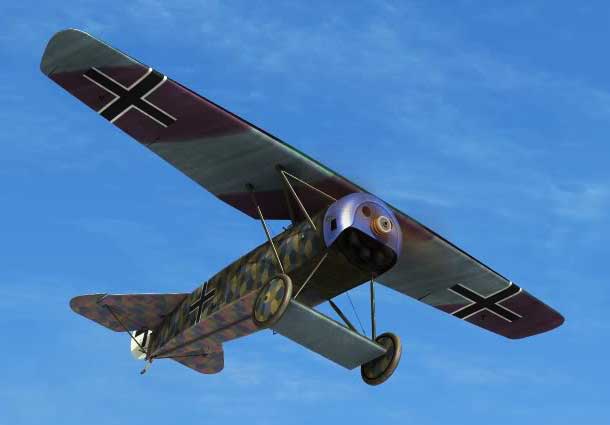
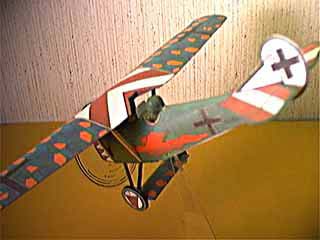
Tony Fokker's noble efforts to advance the state of art of aviation as well as the German WWI air effort), by bringing out the parasol winged DVIII Scout were dashed by an untimely ending of the Great War in 1918. Only 85 were built and it would be years before the single winged airplane really came into being.
The 'Flying Razor Blade', as it was called by the British, scarcely had a chance to prove itself. It had many advantages over the D-VII and would certainly have replaced it if the war had lasted through the winter of 1918-1919.
Fokker DVIII
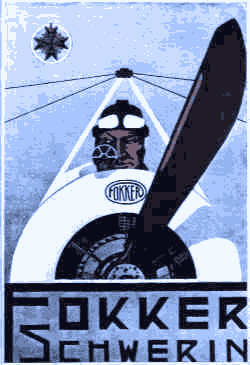 Reinhold
Platz designed and built several shoulder-wing monoplanes from late 1917.
His first parasol monoplanes were the rotary-engine V.26 and V.28 and the
stationary-engine V.27, which took part in the second fighter competition
at Adlershof in May/June 1918.
Reinhold
Platz designed and built several shoulder-wing monoplanes from late 1917.
His first parasol monoplanes were the rotary-engine V.26 and V.28 and the
stationary-engine V.27, which took part in the second fighter competition
at Adlershof in May/June 1918.
A refreshingly simple design, it had a one-piece cantilever wing and twin Spandau guns mounted immediately in front of the cockpit. Following their performance at Adlershof, the V.26/28 design was accepted for production and an initial four hundred were ordered with the Eindecker designation E.V.
It was proposed to use either the 1 45hp UR.III or the 200hp Goe.lII, but since these were not yet available in quantity, the early E.Vs had either Thulin-built Le Rhones or Oberursel UR.IIs of 110hp. Differing only in rounder wingtips, which slightly increased the span, production E.Vs began to be delivered from July 1918.
In August Jasta 6, one of the first units to receive E.Vs, experienced three serious crashes due to wing failure, and it looked as if the defects of the Fokker Dr.I were appearing in the E.V. Sixty or so aircraft were with held pending investigations that ultimately vindicated Platz's design by revealing that the failures were due to poor workmanship and the use of imperfect timber by the contractor who had built the wing units.
With the resumption of production in September 1918 the type was redesignated D.VIII and began to reach the Front towards the end of October. It thus had little chance to prove its worth, but reports indicate that it flew well, was more maneuverable than the D.VII and might well have replaced it.
Although only eighty-five E.V/D.VIIIs were in service
with front-line Jastas on November 1, 1918 (plus some with Naval fighter
units), it seems that the full four hundred were probably built. 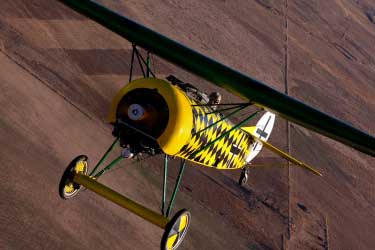
Twenty formed part of Anthony Fokker's famous 'salvage act' of aircraft and engines smuggled into Holland, where some later served with the Dutch Army Air Service for several years, eventually with 145hp UR.III engines.
Small numbers of D.VIIIs went as spoils of war to Britain, France, Italy and the United States; others went to the Polish Air Force, where they were again used in combat early in 1919 against the Ukrainian forces, and to Japan. At the final Adlershof competition in October 1918 the joint winner was another parasol prototype, the V.29. This was based on the D.VII airframe and powered by a 185hp BMW IIIa.
FOKKER E-V AND D-VIII
The development of the Fokker E-V began when, at the request of Anthony Fokker, the test pilot Kuhlisch successfully flew a Fokker D-VII minus its bottom wing. An experimental parasol monoplane, the V.26, was then constructed to the designs of Reinhold Platz. The E-V, a modified V.26, was entered for the fighter contest in April 1918.
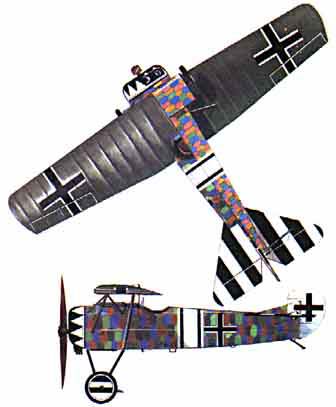
The new type was unanimously declared the winner of the competition; its take-off was rapid, its climb and maneuverability first class. The decision was made to produce the E-V as a replacement for the Fokker D-VII.
The power unit was the 140 h.p. Oberursel rotary engine, which was enclosed in a circular aluminum cowling similar to that of the Dr.I Two tapering box spars were used in the construction of the cantilever wing; the front spar was swept back towards the wing-tips from the connecting points of the center-section struts, the rear spar was straight.
Wing ribs were of three-ply, and the whole wing surface, including the ailerons, was covered with the same material. There was a large angular cut-out in the trailing edge, and typical Fokker streamlined steel-tube cent resection struts were fitted.
The fuselage was a welded steel-tube box girder, braced with wire, with a rounded plywood top decking. The circular cowling was streamlined into the flat-sided fuselage by means of fabric-covered three-ply fillets like those used on the Fokker Dr.I Fabric covered the whole of the rest of the fuselage.
The strut-braced tail surfaces were framed in steel tubing and fabric-covered; the rudder was larger than that of the D-VII but had a much smaller fin. Streamlined steel tubing was also used for the undercarriage struts; as on earlier Fokkers, a large aero foil covered the axle. The standard armament of twin synchronized Spandau guns was fitted.
In May 1918 loading tests were carried out on the E-V at Adlershof. The authorities demanded that the rear spar be strengthened, to conform with the standard for wire-braced airplanes. (No standard existed for cantilever wings.)
This modification was therefore carried out, and the first six aircraft were sent to the front in August. Within a few weeks three E-Vs crashed through wing failure, killing their pilots. As a result of these unexplained accidents it was decided not to issue some sixty machines which had been completed, and production was temporarily stopped.
The source of the trouble proved to be the strengthened rear spar; when the front spar flexed under load, the rear spar remained rigid, and the resultant torsion caused the wing to collapse.
Production recommenced, using the original wing, which was found to be perfectly satisfactory; but valuable time had been lost. With the new designation Fokker D-VIII, the type was supplied in small numbers to the Jagdstadeln, where it flew alongside the D-VII.
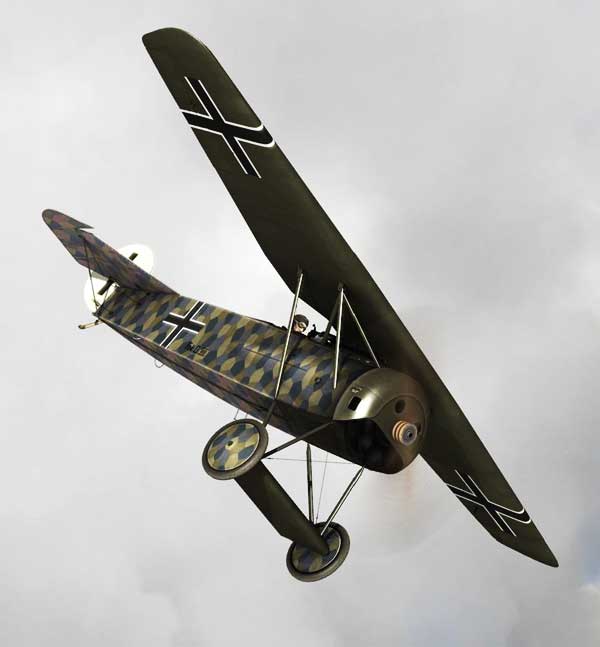
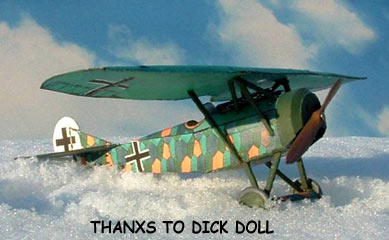
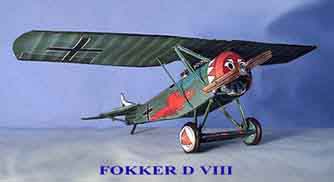
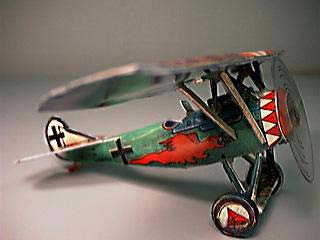
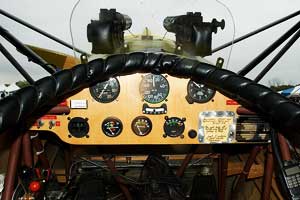 |
| Fokker D.VIII Cockpit. |
Specifications for the Fokker D.VIII
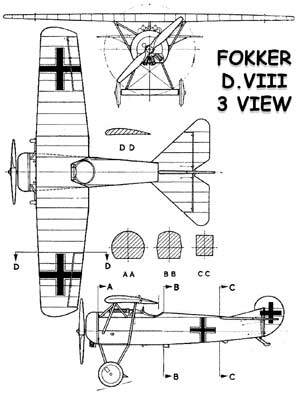 |
Length: 19 ft 4 in Wingspan: 27 ft 6.75 in Height: 9 ft 3 in Wing area: 115.5 ft² Empty weight: 848 lb Max takeoff weight: 1,238 lb Powerplant: 1× Oberursel UR.II, 110 hp Performance Maximum speed: 127 mph Service ceiling: 20,670 ft Armament 2 × 7.92 mm Spandau MG08 machine guns |



